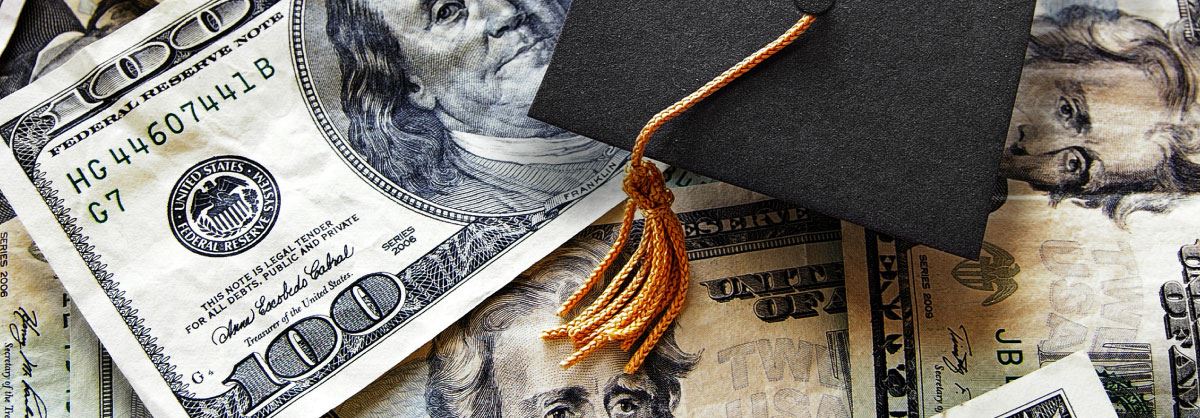Pay Off Student Loans

Americans owe more than $1.4 trillion in student loan debt, and students graduating this year will, on average, face decades of monthly payments. Grappling with such a large amount of debt can be paralyzing, especially for recent graduates whose average starting salary isn’t six-digits. Thankfully, there are methods and steps that you can take to manage that debt, pay it off faster, and minimize the amount of interest paid over the life of the loan.
1. Know Your Loans
The U.S. government, along with other financial institutions, provides multiple types of student loans. Understanding the loans that you have can help you determine the payment plan that works best for you. Whether federal unsubsidized loans or private loans, every loan type has different rules, interest rates, and policies.
- Subsidized Stafford Loans: These loans offer a fixed interest rate, with the government paying the interest on the loan while you are still in school. You do not begin to accrue interest until after you graduate and payments are deferred until after graduation.
- Unsubsidized Stafford Loans: The fixed interest rate is the same as subsidized loans, but the loans begin to acquire interest immediately. However, payments can be deferred until after graduation.
- Parent PLUS Loans: Specifically for parents that are assisting with their student’s education. These loans accrue interest immediately.
- Grad PLUS Loans: These loans are for graduate students pursuing a masters or doctorate degree. These loans have a fixed interest rate and accrue interest immediately.
- Private Loans: These are similar to personal loans and the interest rates on the loans can vary widely depending on your credit history. Their interest rates can be fixed or variable and are usually higher than federal student loans. Also, these loan types don’t typically offer deferment and interest often begins to accrue right away.
2. Make a Plan
With the cost of tuition, fees, and living expenses always increasing, most students end up graduating with a combination of subsided and unsubsidized loans along with a mix of private loans. Once you understand all of the loans you have, you can make a strategic plan to pay off your debt.
Some of the best payment plans either focus on tackling the loan with the highest interest rate first and then focusing on the next highest rate. In the case of student loans, it is wise to tackle private student loans first, since they often have higher rates and less favorable terms. Typically, you would work your way down and leave the subsidized Stafford loans for last.
3. Start Early, Pay Off Early
To state the obvious, the sooner you begin to make payments, the faster you’ll pay them off. The best option is to begin paying off the loans that are accruing interest while you’re still in school. Most students don’t have a source of income, but if you have a part-time job or if you can find one, you can put a significant dent in your loans before you graduate and save thousands of dollars on interest.
4. Maximize Your Payments
If you can, pay more than your minimum monthly payment and create a weekly or bi-monthly payment plan. For example, if you currently pay $400 per month, you can split that amount in half and pay $200 every two weeks for a total of 26 payments in a year. 26 payments a year equates to one extra payment, or 13 payments instead of the standard 12. The same idea can be applied to weekly payments as well.
5. Plan Ahead to Tax Season
If you pay interest on your student loans, you may be able to claim the interest you’ve paid as a tax deduction up to $2,500. And, if you have any money left over after tax season, apply your tax refund to your student loan balance as an extra yearly payment.
6. Forbearance
There are government programs, such as AmeriCorps, which provide part-time or full-time volunteers the ability to put student loans into forbearance. With forbearance, AmeriCorps will pay the interest that accrues on those loans and payments can be deferred while you complete your service.
7. Loan Forgiveness
The Public Student Loan Forgiveness Program is a federal program that helps people working in public service jobs to pay off their student loans faster or provide 100% loan forgiveness in some cases. There are multiple requirements that must be met to be eligible for the program. For more information, you can visit ed.gov.
8. Ask Your Company to Pay Your Debt
More and more companies are providing assistance with student loan debt as a way to attract and retain millennials entering the job market. Some companies such as Aetna and Fidelity Investments offer a certain amount of money each year towards their employee’s student loans, typically ranging from $1,000 to $2,000 per year with a specified lifetime maximum.
9. Consolidate and Refinance
Due to the nature of student loans, most people graduate with 8-10 different loans that all have separate monthly minimum payments and may have different due dates. Keeping track of that kind of volume can put you at risk for missing payments and can be a hassle to manage. In order to simplify your loans, you can apply for a direct consolidation loan offered through the federal loan program. This option consolidates all of your loans into a single loan with a fixed-interest rate and reduced monthly payments.
The downside to consolidation is the possibility of stretching payments over a longer period of time. In turn, this increases the amount of interest you pay long-term. By consolidating, you could lose some of the benefits offered by the original loan such as loan forgiveness and interest rate discounts.
At Rivermark, we provide refinancing and student loan consolidation services with competitive rates and amounts of up to $125,000. Learn more about student loan refinancing and consolidation.
10. Pay On Time
Last but not least, pay your loans on time. If you miss payments or you pay late, you can be penalized through extra fees and higher interest rates. Most of all, your credit history can be damaged by late payments.
Find Help!
Taking on student loans can be a daunting task, but you’re not alone. There are plenty of resources out there, including refinance options from Rivermark. Learn more here or call 866.686.6854 to chat with a Credit Union Student Choice Loan Program Representative.





